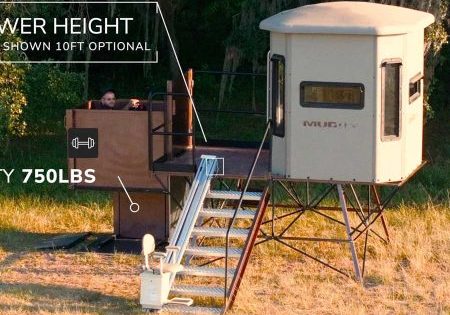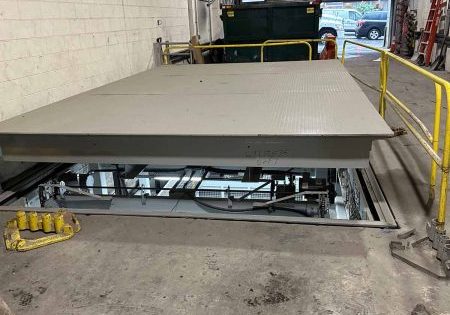The Impact of Artificial Intelligence in the Elevator Industry
Mar 1, 2025

by Pankaj Prasad
This paper was presented at the 2024 International Elevator & Escalator Symposium in Paradise Island, Bahamas.
1. Abstract
Artificial Intelligence (AI) is a transformative new technology that has many applications in the elevator industry. In this paper, we will dive into specifics of what it is, what it isn’t and how it can apply to your business by exploring use cases.
Here are some examples:
- Ramping up new employees
- Reducing time to resolution
- Optimizing labor costs
- Preserving institutional knowledge
This paper will focus on tangible examples (not technical details) that you can immediately apply to your business.
2. Introduction
AI is reshaping industries by offering solutions that enhance efficiency, reduce operational costs and improve service delivery. In the elevator industry, where skilled technicians are essential for maintenance, repair and customer service, AI’s role is not to replace workers, but to augment their abilities, making their jobs easier, faster and more informed. This paper argues that AI can serve as a valuable tool in addressing the growing skills gap, especially in light of the Silver Tsunami —the anticipated wave of retirements as a large portion of the workforce nears the end of their careers and new technicians come up to speed.
AI can support the industry by addressing multiple challenges, including:
- Ramping up new employees: AI-assisted training systems can shorten onboarding periods by offering personalized, on-demand learning experiences tailored to individual needs. Deliver just-in-time training to help technicians solve problems of increasingly complex systems.
- Reducing time to resolution: AI can help technicians identify problems by providing related issues and suggesting solutions, enabling technicians to resolve issues more swiftly. Providing the right information at the right time bolsters a safety culture by ensuring that technicians rely on data-driven insights rather than trial and error.
- Better utilization of existing resources: AI helps companies make the most of their workforce by intelligently scheduling technicians based on their knowledge/skill/experience level and ensuring that resources are allocated efficiently.
- Preserving institutional knowledge: With a rapidly aging workforce, AI systems can document and retain the knowledge of senior technicians, making it accessible to newer employees for years to come.
These AI applications don’t reduce the demand for human labor; instead, they enable technicians — both new and experienced — to work smarter. By lowering barriers to entry, AI creates more opportunities for individuals to enter the elevator industry, helping to counteract the shrinking workforce caused by retirements. In the context of the Silver Tsunami, AI offers a way to preserve critical institutional knowledge while making the profession more attractive to younger generations.
In this paper, we will explore these AI use cases in the elevator industry, demonstrating that the technology is not here to replace jobs, but to enhance them and make the profession more accessible, sustainable and appealing to future workers.
3. Understanding AI in the Elevator
3.1 What AI Is
AI’s potential in the elevator industry is focused on enhancing decision-making by providing technicians with real-time, relevant information. By providing instant access to previous cases, work orders or quickly pulling up service history, technicians are better informed to make future decisions.
For example, when a technician encounters an unfamiliar problem, AI can offer suggestions based on similar cases across a fleet of elevators, helping resolve the issue faster. Additionally,
AI can track performance trends and suggest optimal times for preventative maintenance, thus reducing the likelihood of breakdowns. By ensuring that the right information is delivered at the right time, AI also enhances safety by reducing the chances of technicians having to rely on guesswork or trial and error during repairs.
3.2 What AI Isn’t
AI is not a replacement for technicians or other skilled workers. Many discussions around AI often lean toward the more glamorous aspects like fully autonomous systems and predictive maintenance. But such capabilities, while intriguing, are only part of the equation. AI in its current state is a supportive technology meant to assist human workers, not replace them. Complex repairs and nuanced problem-solving still require the hands-on expertise that only experienced technicians can provide.
Furthermore, AI is not a silver bullet. It requires high-quality data to be effective and cannot function as an independent operator without human oversight. Rather than imagining a future where AI takes over jobs, the industry should focus on how AI can amplify the skills and abilities of its current workforce.
4. Core Thesis: Augmenting Intelligence with AI
4.1 AI for Fast and Accurate Information Retrieval
The central role AI should play in the elevator industry is helping technicians retrieve accurate information quickly. In a field where downtime is costly and troubleshooting can be time-consuming, access to the right data can make all the difference. AI-based platforms can provide real-time insights from past maintenance logs, manuals and sensor data, enabling technicians to solve problems faster and with greater confidence. This real-time access to information not only improves efficiency, but also bolsters a safety culture by ensuring that technicians have the data they need to make informed decisions instead of relying on trial and error.
For example, when a technician responds to a service call, the AI system could provide a list of potential causes based on similar cases, along with step-by-step guides or videos that show how to resolve the issue. This saves time and reduces stress for the technician while improving service quality for the customer. It also enhances safety by preventing technicians from experimenting with potential fixes when they aren’t sure of the problem.
4.2 AI as a Tool, Not a Replacement
It’s important to stress that AI will not replace the human element in the elevator industry. AI excels at handling repetitive tasks, data analysis and pattern recognition, but it does not have the ability to adapt to the complex and often unpredictable nature of fieldwork. Technicians bring essential experience, intuition and hands-on skills that AI cannot replicate.
Instead, AI functions as a tool that makes technicians more effective. It takes the burden of searching for information or remembering every detail of past repairs off their shoulders, allowing them to focus on the critical aspects of their work. In doing so, AI enhances human capabilities, making it easier for less experienced workers to handle challenging jobs while enabling seasoned technicians to work more efficiently and safely.
5. Applications of AI in the Elevator Industry
5.1 Ramping Up New Employees
With a significant portion of the workforce nearing retirement, one of the industry’s greatest challenges is training new employees quickly and effectively. AI can accelerate this process by offering adaptive, real-time training tools that cater to each individual’s learning pace. AI-bots can provide new hires with a place to ask “dumb” questions that they may not otherwise ask.
Moreover, these tools can provide immediate feedback, helping trainees correct mistakes and build confidence. This approach not only reduces the time needed to ramp up new employees, but also improves the quality of training by making it more interactive and personalized. The availability of real-time information ensures that even new employees can work safely, with AI guiding them through complex processes and preventing errors.
5.2 Reducing Time to Resolution
In the service industry, time to resolution is a critical performance metric. AI systems can streamline troubleshooting by offering suggestions based on data from sensors, past repairs
and similar issues encountered elsewhere. This allows technicians to resolve problems faster, minimizing elevator downtime and improving customer satisfaction.
For example, instead of spending hours diagnosing a problem, a technician could input symptoms into an AI system, which would then analyze data from multiple sources to suggest the most likely causes. This enables the technician to fix the issue without unnecessary delays, freeing them up to handle more service calls. By providing the right information at the right time, AI helps ensure that technicians approach each problem with clarity, reducing the risk of mistakes and promoting a culture of safety.
5.3 Better Utilization of Existing Resources
AI can help businesses make better use of their existing resources by intelligently scheduling and dispatching technicians based on skills, location and job complexity. This ensures that the right technician is assigned to the right job, reducing travel time and maximizing the number of service calls that can be completed in a day.
For instance, AI can analyze a company’s historical service call data to forecast peak times, helping management plan staffing levels accordingly. Instead of reducing labor costs, the focus is on improving how existing resources are utilized to meet customer demands more efficiently without overburdening the workforce. Additionally, by ensuring that technicians have the information they need when they need it, AI promotes safety by preventing technicians from “winging it” when they lack proper context for a job.
5.4 Preserving Institutional Knowledge
The aging workforce, also known as the Silver Tsunami, presents a significant challenge for industries like elevator maintenance companies, where decades of experience and knowledge are at risk of being lost as senior employees retire. AI can help preserve this institutional knowledge by capturing and organizing it in a way that is accessible to future generations of workers.
For example, AI systems can record troubleshooting processes, repair strategies and other insights from senior technicians, creating a knowledge base that less-experienced workers can access when needed. This ensures that the collective wisdom of the workforce is not lost, even as the demographic shifts. Providing instant access to this knowledge allows newer employees to work more safely and confidently, knowing they have the guidance of seasoned experts at their fingertips.
6. Challenges and Considerations in Implementing AI
Despite its potential, AI implementation comes with challenges. Data quality and availability are critical for AI systems to function effectively. If the data being fed into the system is incomplete or inaccurate, AI’s recommendations may be flawed.
Change management is another important consideration. Technicians may resist adopting AI tools if they fear these systems will undermine their expertise or threaten their jobs. Clear communication and training will be necessary to show that AI is there to support, not replace, their roles.
Finally, the cost of implementing AI tools and platforms can be significant, especially for smaller companies. Businesses must carefully evaluate the long-term benefits of AI against its upfront costs, ensuring that they adopt solutions that meet their specific needs and capabilities.
7. Conclusion
AI has the potential to transform the elevator industry by augmenting the intelligence of its workforce, not replacing it. In the face of the Silver Tsunami, AI can preserve critical institutional knowledge, help ramp up new employees faster and improve overall efficiency through fast and accurate information retrieval. By focusing on how AI can support technicians in their daily tasks, the industry can ensure that it remains competitive while creating more opportunities for new workers to enter the field.
By providing the right information at the right time, AI also bolsters a safety culture, reducing the chances of technicians making mistakes due to incomplete information. As AI continues to evolve, its role in the elevator industry will be less about taking jobs and more about empowering the workforce with the tools they need to succeed in a rapidly changing environment.
Get more of Elevator World. Sign up for our free e-newsletter.









